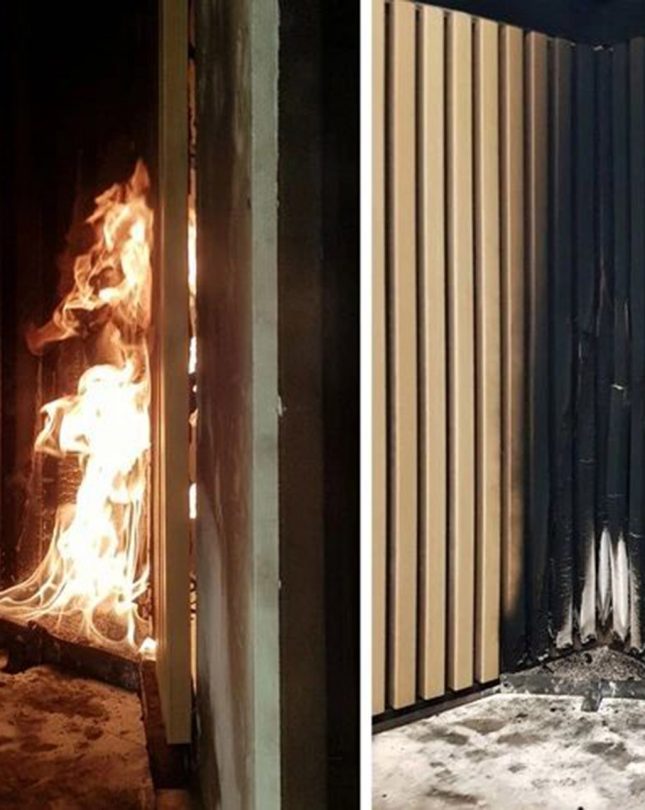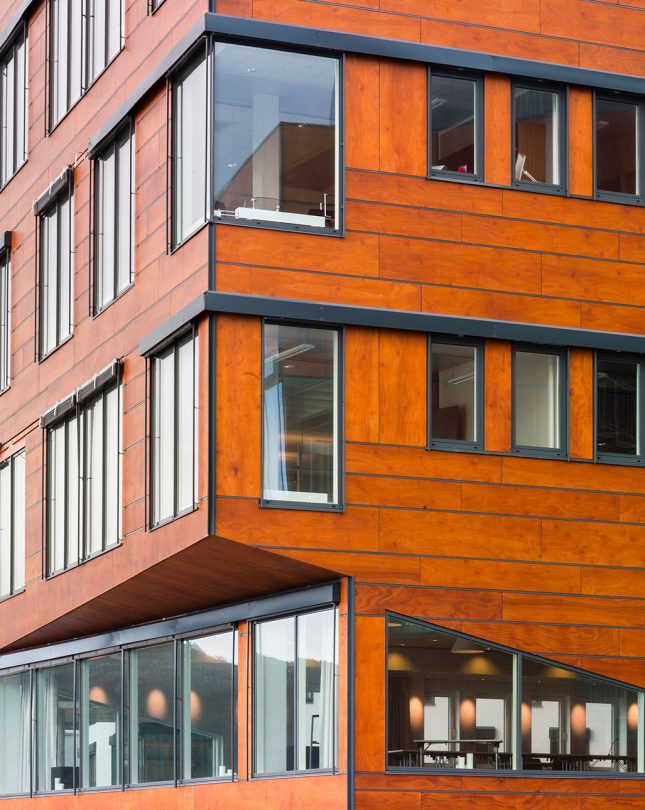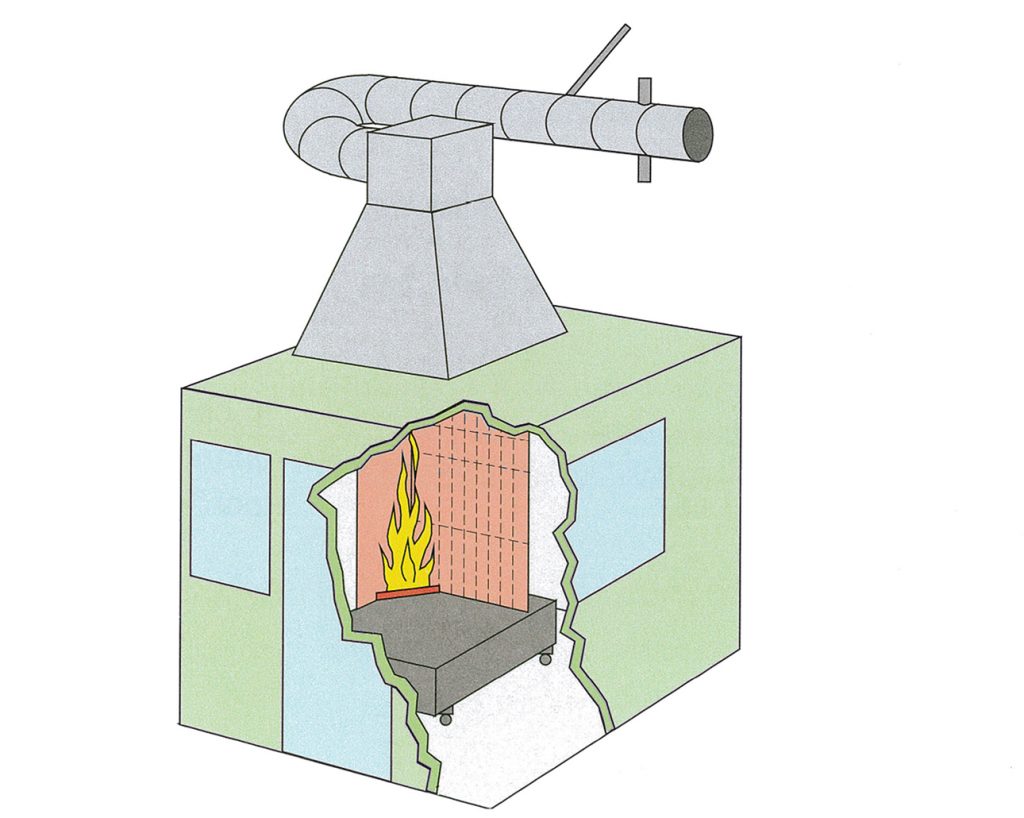
Reaction to fire testing methods
Reaction to fire testing methods are designed to simulate the incipient and growth phases of a fire. The purpose is to evaluate how products and materials contribute to the early stages of a fire in terms of:
1. Ignitability
2. Flame spread
3. Heat release
4. Smoke production
5. Occurrence of flaming droplets/particles

European standards for interiors
Wall and Ceiling claddings used in public rooms must only make a small contribution to the fire development and to the production of smoke, meaning that normally minimum Euroclass B-s1,d0 is required.
1. Reaction to fire, standard EN 13501-1 Construction products, including walls and ceilings
2. Reaction to fire, standard EN 13501-1 Floorings
European standards for exteriors
For outdoor building elements like façade claddings, the same reaction to fire standard (EN 13501-1) is used, but alternative specific façade standards are available and valid in some of the countries belonging to the European community. In for example the Scandinavian countries such a specific façade standard is “SP FIRE 105”.

Tests to determine Reaction to Fire Classifications according to 13501-1
The following 2 tests are conducted for the classification of building products (i.e. wood-based materials) according to EN 13501-1.
Test method EN ISO 11925-2

Test method EN 13823

